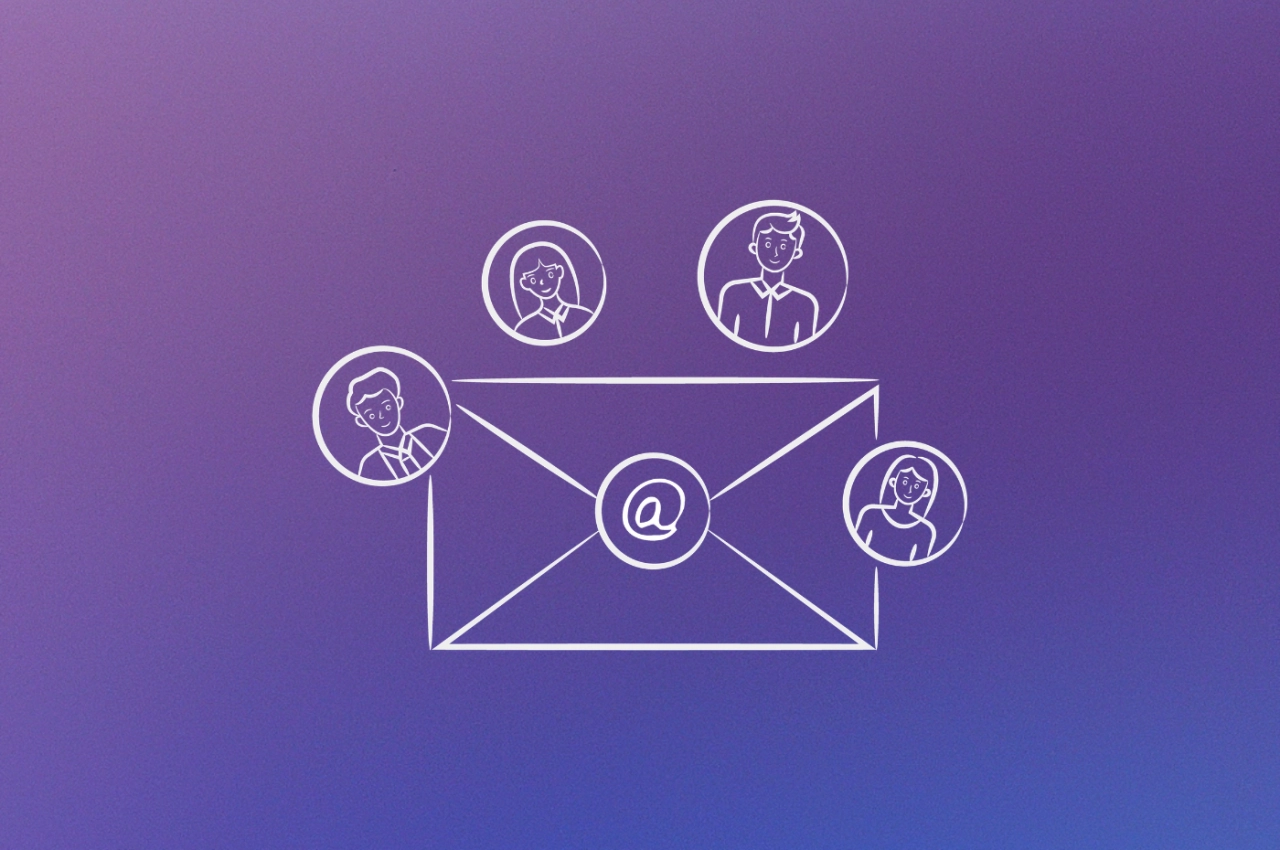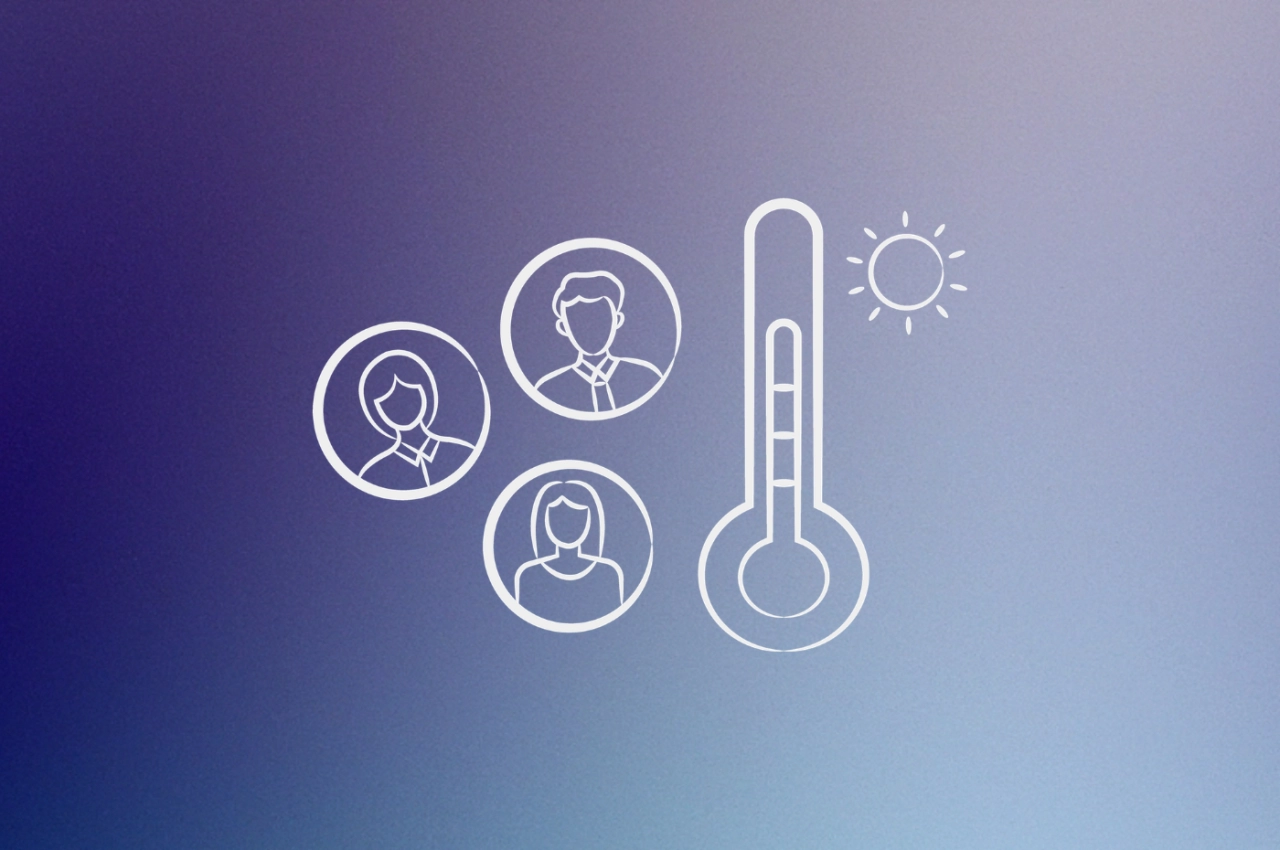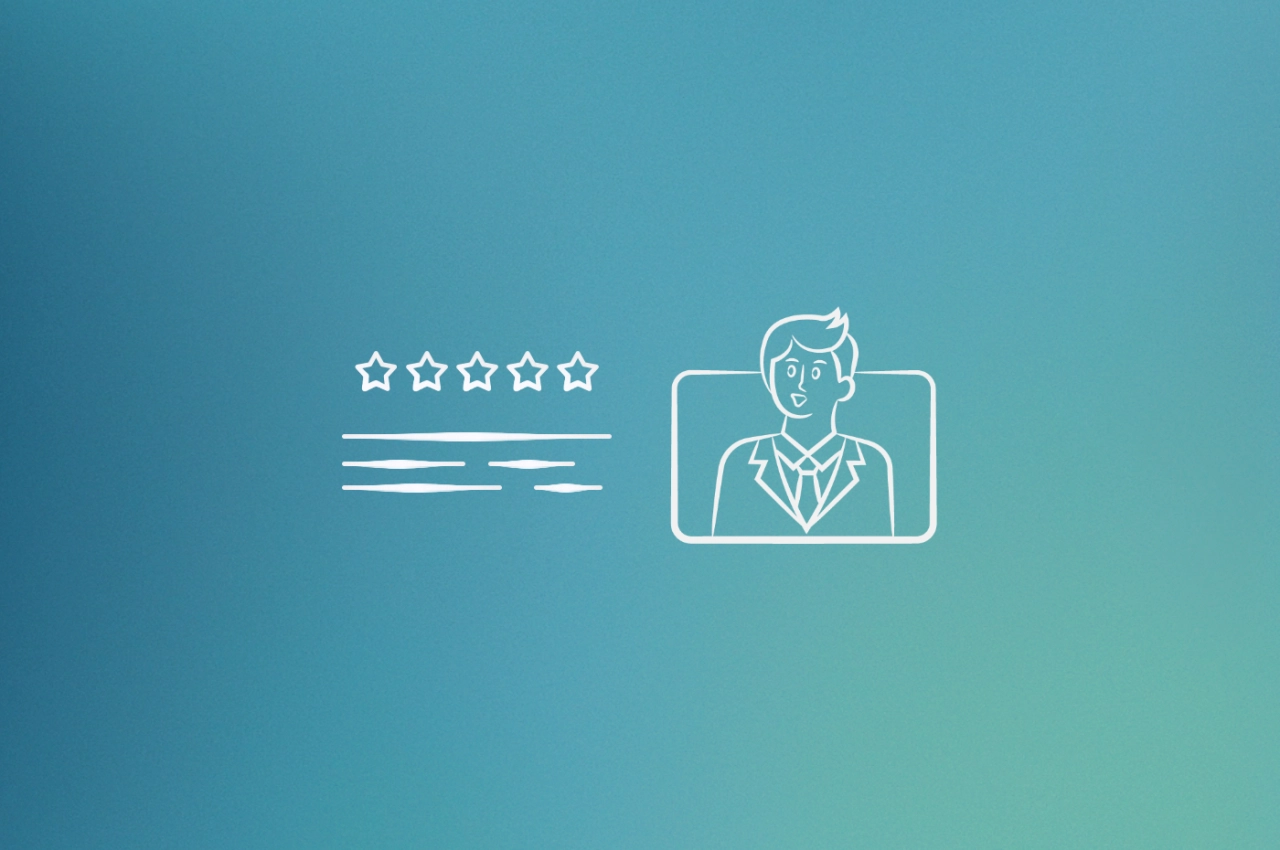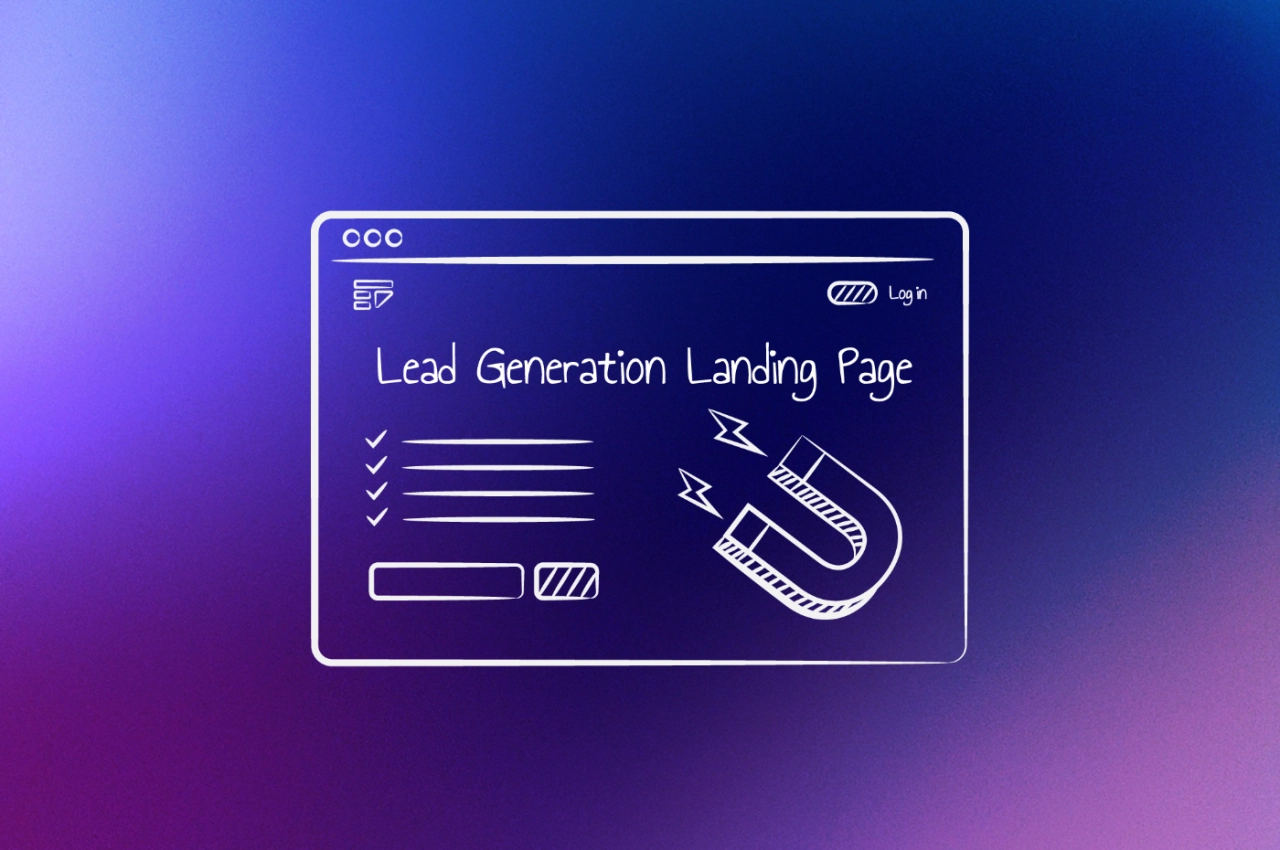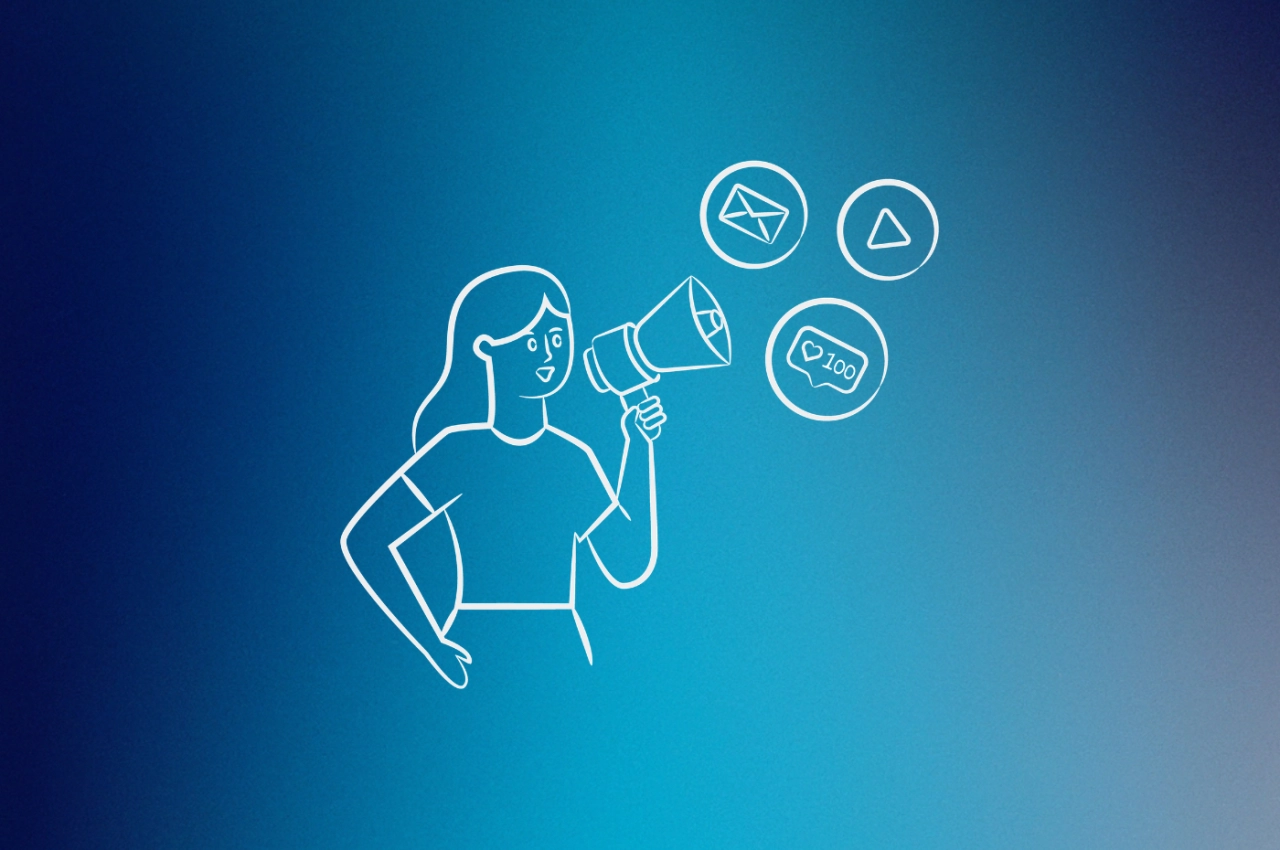- Email lead generation is a vital process for collecting contact details of interested individuals, offering personalized content, and nurturing them through tailored email campaigns for conversion.
- This approach provides ownership of the email list, offers cost-effectiveness, allows personalization and segmentation, and leverages automation for efficient lead nurturing.
- Effective email lead generation involves creating compelling lead magnets, optimizing opt-in forms, personalizing content, segmenting leads, and continuously analyzing and optimizing campaigns.
Over the last decade, lead generation has become a household name in the marketing industry. And the reason isn’t far-fetched. You need clients to run a successful business. But to get customers, you must have a proper lead sourcing strategy.
So it’s no surprise to see agency owners employ different channels to generate leads for their business. One such channel is email marketing.
Since its inception, email has grown beyond just a communication tool. It’s one of the most effective digital marketing channels for generating and converting leads to paying customers. In short, 87% of marketing leaders say email is critical to their success in the Litmus 2023 State of Email Workflows Report.
It goes without saying that if you’re not leveraging email marketing to generate leads for your business, you’re leaving serious money on the table.
In this guide, you’ll learn what email lead generation is, its importance, and some best practices. I’ll also discuss methods for generating leads via email, some email design tips, and how to write a lead generation email.
What is email lead generation?
Email lead generation is a process where businesses collect contact details such as the names and email addresses of people who express interest in their product or service.
It typically involves creating opt-in forms, landing pages, and lead magnets to entice your target audience to join your email list. Once in, they receive targeted content that nurtures and guides them through your sales funnel.
Why is email lead generation important?
Lead generation poses a challenge for many companies. Yet, there are several reasons why email lead generation is crucial to any business.
Let’s look at some of them.
1. You own your email list
Imagine waking up to find out your Twitter or Instagram account has been hacked or deactivated and all efforts to restore it fail. Your years of building an online audience have gone down the drain.
This is where email marketing trumps other platforms. It allows you to build a database of potential customers who have expressed interest in your product or service.
The best part? You own the list. Even if you change your email service provider (ESP), your list remains yours.
2. It’s cost-effective
Over time, email has proven to be the most cost-effective method for acquiring and converting leads. Litmus research shows that email drives an average ROI of $36 for every dollar spent, higher than other lead generation channels such as content marketing, social media, or SEO.
3. It allows for personalized and segmentation
Email allows you to personalize your messages based on the recipient’s interests and preferences. Also, segmenting your email list helps to tailor your content to a specific audience, which increases engagement and conversion.
4. Automation makes lead generation a breeze
Email automation makes lead generation more efficient and scalable. With automated lead generation, you can nurture and convert leads at scale, saving more time and resources.

What is the email lead generation journey?
Nobody wakes up and decides: “Today, I want to subscribe to an email list.” The journey usually starts by interacting with a brand via social media, blog posts, videos, or paid ads. Then you show interest in the brand’s product or services either by signing up for a newsletter, downloading a free resource, or submitting a contact form.
This path is called an email lead generation journey. It’s the process a cold lead goes through from the moment it comes in contact with your business until it becomes a subscriber. The journey typically involves the following steps.
Leads capturing
This involves attracting potential leads by enticing them with lead magnets such as e-books, discount offers, or webinars in exchange for their contact details. You capture their details via compelling opt-in forms, lead capture landing pages, or pop-ups on your website.
Segmenting leads
Imagine you signed up on a brand’s mailing list to receive SEO-related content, instead they send other email categories irrelevant to you. I bet you’d feel confused, disappointed, and eventually unsubscribe. That’s why email segmentation is essential.
By segmenting your leads based on their interests, demographics, or behavior, they get to receive content they signed up for. Anything short and they’ll begin to question your credibility and ability to deliver on their promises.
Lead nurturing via drip campaigns
After segmenting your leads, you can start nurturing them through drip campaigns. A drip campaign is a series of automated emails that are sent out to leads over some time. These emails are designed to:
educate leads about your product or service
build solid relationships with them
provide valuable, engaging content
earn their trust
Some popular drip campaigns include welcome, customer onboarding, post-purchase, and cart abandonment emails.
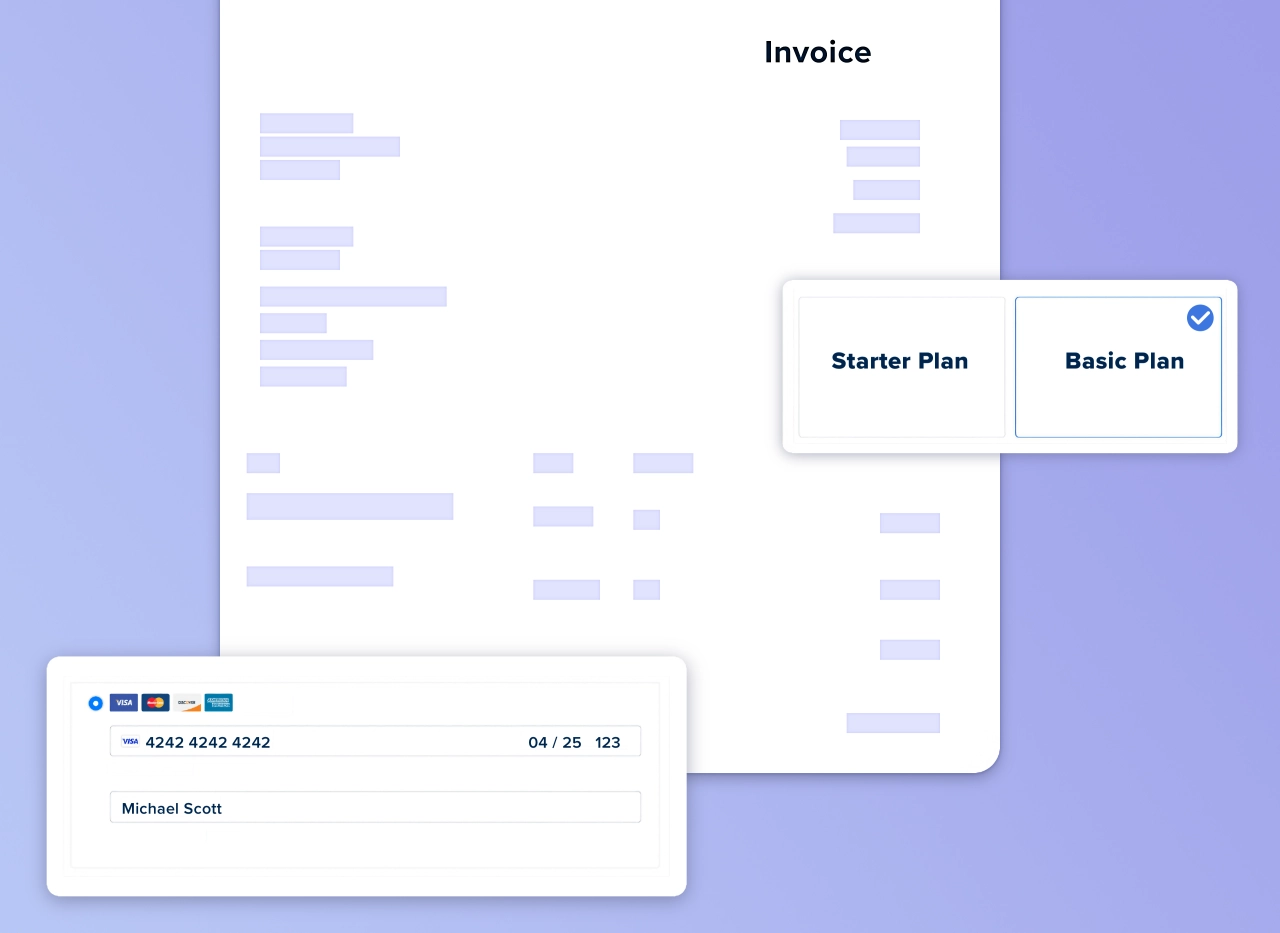
Invoice and collect payments automatically and on time.
Lead conversion
Just like a typical buyer’s journey, the ultimate goal of any email lead generation campaign is to convert subscribers into paying customers. You do this by sending targeted offers, promotional emails, or exclusive discounts to drive purchases. Also, creating a sense of scarcity, urgency or exclusivity motivates leads to take action and make a purchase.
Lead retention
The journey doesn’t end with the first purchase. An effective email lead generation campaign also focuses on retaining customers and encouraging them to make future purchases.
Adjust automation based on behavior
Once you have set up your automated email workflows, it’s crucial to continuously monitor and adjust them based on the recipient’s behavior.
Email lead generation best practices
Here are some powerful tips to help you get the best results from your email lead generation efforts.
1. Create and offer value (e-books, free trials, etc.)
Providing a free, valuable lead magnet is a great way to attract potential leads and encourage them to share their contact information with you.
However, it’s not enough to create a free resource and expect many people to join your email list. It has to be irresistible to get more people to subscribe.
Typical qualities of an effective lead magnet include:
Highly relevant to your target audience and aligned with their interests or pain points.
Addresses a specific problem or offers a solution that resonates with your audience.
Easy to consume and quickly delivers the promised value.
Provides valuable insights that position you as an expert in your field.
Drives interest in your products or services without being overly promotional.
One more thing to keep in mind is that your lead magnet should be accessible to your audience immediately after they subscribe. This helps to establish trust. Make use of email marketing software like Mailchimp or Aweber to deliver the lead magnet instantly.
Examples of lead magnets you can offer potential leads include e-books, checklists, cheat sheets, templates, webinar/event invites, guides, and free trials of your product or service.
2. Optimize your opt-in forms and landing pages
To get more people to join your mailing list, ensure your landing page and opt-in form are well-designed and optimized for conversions.
Use compelling copy, actionable call to action (CTA) buttons, and visually appealing images to capture your audience’s attention and entice them to sign up.
Also, consider using a few form fields on your landing page as it leads to more signups.
Naturally as marketers or salespeople, we want to ask for lots of information from visitors. Users on the other hand want to spend as little time as possible filling out the landing page to get access to the offer they’re trying to get.
 Dan Zarrella,
Hubspot
Dan Zarrella,
Hubspot
But in cases where you need more information from your leads, you can include other fields such as job title, industry, company revenue, company size, and phone number. Though you may get fewer leads, people who go the extra mile to fill out the form have a higher buying intent.
3. Personalize your emails
Have you ever read an email that seemed like it was speaking directly to you? That’s what personalization does. Data from Hubspot’s The State of Marketing 2023 report shows message personalization is the #1 tactic email marketers use to increase engagement rates.
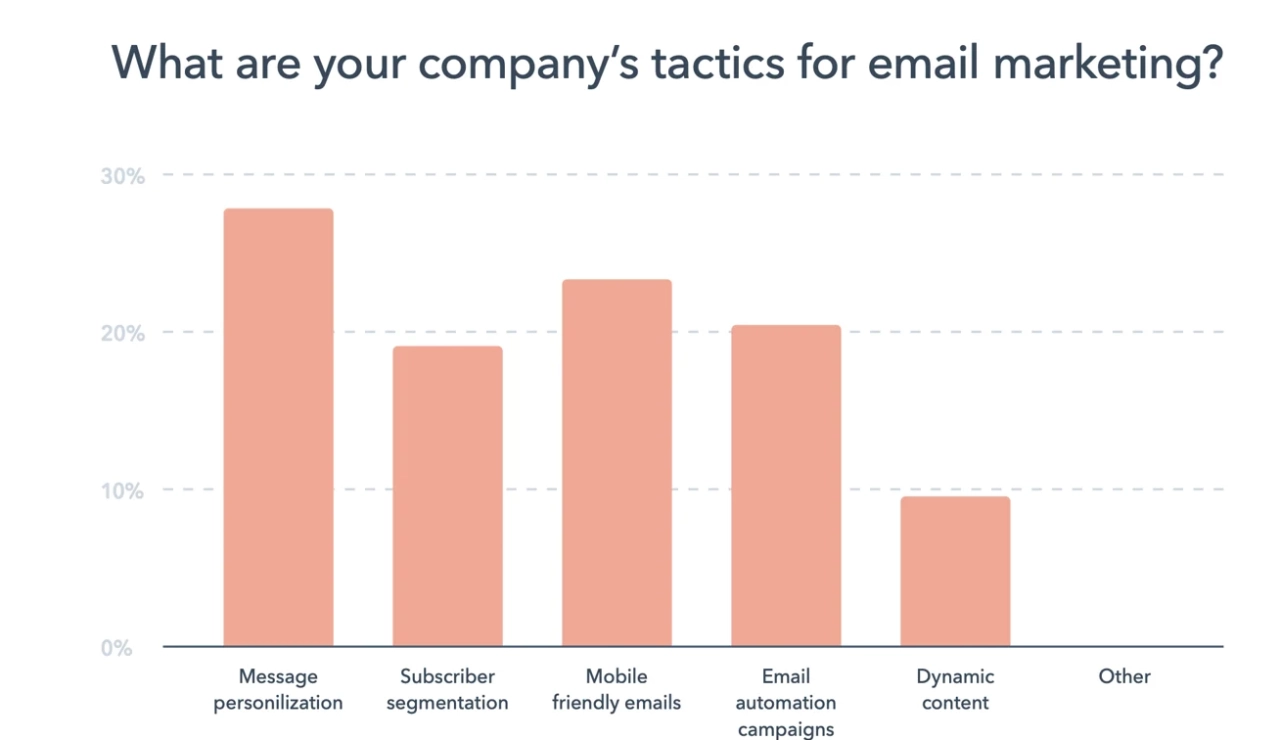
Rather than blasting generic emails, your subscribers receive content that matches their interests or behavior. This increases engagement, builds trust, and drives more conversions. No wonder 55% of email marketers say expanding the use of personalization is their top marketing priority in the next 12 months.
4. Segment your users
Sending the same email to subscribers with different interests will lead to a high unsubscribe rate. I bet you wouldn’t want that. That’s where user segmentation comes in.
Segmenting your mailing list enables you to tailor your email campaigns to specific groups of subscribers.
Here are some common ways to segment your mailing list.
demographics
sales funnel stage
interests
behavior
purchase history
job title/industry
company size/revenue
engagement level
acquisition channel
Pro tip: Integrating email marketing tools like MailChimp or ActiveCampaign with other software like SPP makes user segmentation a breeze. You can segment your email based on interests or purchases.
5. A/B test different variables
Email A/B testing involves comparing multiple versions of elements to determine the one that performs better. Also called split testing, it’s a great way to learn more about your subscribers so you can create more personalized experiences.
What’s more, you get valuable insights into what resonates best with your readers, allowing you to make informed decisions when optimizing your email campaigns.
Email lead generation elements you can A/B test include:
subject lines
email design/length
time, day, and frequency of emails
landing page
opt-in form fields
call-to-action (CTA)
6. Optimize your call-to-action
After getting a reasonable open rate, you’d expect people to take your desired action but all you hear is crickets. The click rate is nothing to write home about. What could be the issue?
Several reasons may be responsible, but the call-to-action (CTA) is one that must not be overlooked. It plays a crucial role in driving conversions and can be the difference between getting five and 20 clicks.
Here are some tips for optimizing your CTAs:
Use clear and compelling language: boring, generic CTAs no longer cut it. Instead, use action words that communicate the benefits leads will get and compel them to take the next step. Some CTA examples include:
Save my seat
Download free e-book
Book a call
Get the Discount
Reserve Your Spot
Try for Free
Make it stand out: use contrasting colors, bold fonts, or larger sizes to make your CTA button prominent and easy to spot.
Place it strategically: position your CTA button in a location that is visible and easily accessible to the recipient.
Don’t use more than one CTA: use only one CTA button in your email to avoid confusion and increase the chances of getting clicks. Emails with a single call-to-action increased clicks by 371% and sales by 1,617% according to research by Ellie Mirman, former VP of Marketing at Toast.
Test different variations: split test different versions of your CTA to see which one performs better. Try different wording, colors, or placements to find the most effective option.
Here’s an example of an email from Mixpanel that ticks all the boxes.

There’s only one CTA that says “Save your seat” which packs more punch than a generic CTA such as subscribe.
It also uses a prominent color that makes it stand out from the email content and quickly catches the reader’s eye.
Lastly, it’s placed strategically at the bottom of the email making it visible and easily clickable.
7. Score your leads
Imagine this: you’ve nailed your lead generation campaign via email. Hundreds of subscribers are pouring in. But there’s one tiny problem. How do you sift through a large pool of subscribers to discover high-intent buyers?
That’s where lead scoring comes in. It’s a technique used to rank leads based on their level of interaction with your email marketing campaigns. You assign a numerical value to each contact based on different criteria such as email engagement, website activity, or demographics. This way, you can identify high-quality leads most likely to convert.
Email automation plays a crucial role in lead generation, helping you to streamline the process.
By automation the lead scoring process, you can:
Track various lead behaviors, such as opens, clicks, website visits, content downloads, or demo requests. This way, you can identify, segment, and prioritize qualified leads.
Nurture leads through personalized automated drip campaigns at each stage of the leads buyer’s journey.
Set up triggers that automatically adjust lead scores based on specific milestones. For instance, a lead who requests a demo will receive an increased score.
8. Send helpful contentConstant Contact
Your ability to improve email marketing and campaign performance ultimately comes down to sending quality content that adds value to the subscriber.
 Dave Charest,
Constant Contact
Dave Charest,
Constant Contact
Getting people to join your email list is one thing. Keeping them there is a different ball game.
If you bombard your subscribers with promotional emails, it shows you’re only concerned about yourself and will have them reaching for the unsubscribe button faster than you can imagine.
But sending relevant, helpful content earns their trust, drives engagement, and moves them closer to becoming paying customers.
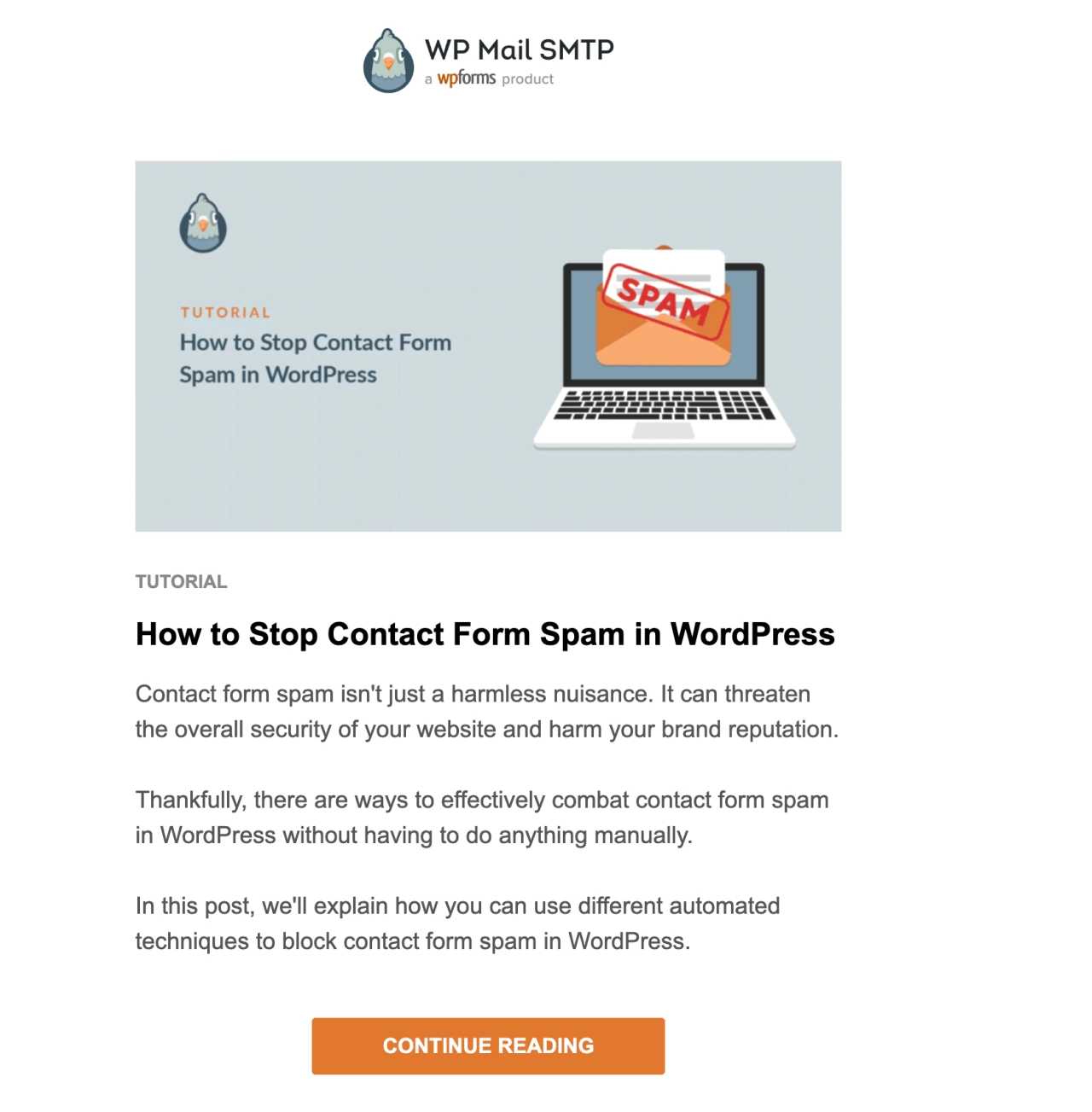
For example, this short tutorial email from WP Mail SMTP talks about how to solve the problem of contact form spam for websites running on WordPress. Subscribers who encounter this problem will surely find it helpful.
9. Clean your list
Subscribers who don’t engage with your emails or take any action are unhealthy for your list. They contribute to lower engagement metrics such as open and click-through rate which negatively impacts your email deliverability and sender reputation. This is a major problem, one that leads to your emails getting delivered as spam rather than to the recipient’s inbox.
Also, having many inactive leads means you’re spending more money to send emails to people who don’t interact with them. So your best bet is to remove inactive subscribers, thus reducing cost and maintaining a healthy mailing list.
10. Analyze and optimize continuously
Throughout the email lead generation journey, it’s important to analyze and optimize your marketing campaigns continuously. Track metrics such as open, click, and conversion rates to measure the overall effectiveness of your lead gen efforts and make data-driven decisions.
3 methods to generate leads via email
1. Outbound (cold) email lead generation
Outbound email lead generation involves reaching out to people who have not shown any prior interest in your products or services. In fact, they may have never heard of your business.
However, this type of email lead gen tactic is different from buying an email list with thousands of leads and blasting them with unsolicited emails.
Cold emailing as it’s popularly called requires researching and identifying the right target audience and sending them personalized cold emails to convert them into leads.
Here are some cold emailing best practices:
personalize emails to build rapport and increase the likelihood of getting a response
avoid spam language
keep it short, simple, and straight to the point
provide clear calls to action on the next steps.
send a few follow-up emails if you don’t get any response.
These tips will help you get better open and click-through rates. Once you get a positive response, add the lead to your email list to continue the nurturing process.
2. Inbound email lead generation
Can you remember the last time you filled out a signup form? You probably saw a post on social media asking you to download a free e-book in exchange for your contact details.
Unlike outbound where you reach out to potential leads, this tactic involves providing valuable content or resources to entice your target audience into providing their contact information.
Here are a few ways to generate inbound email leads:
Create valuable content such as e-books, white papers, or guides and share them on social media, or your website.
Host webinars or live events requiring attendees to provide their email addresses to reserve a spot.
Offer exclusive discounts, coupons, or free trials in exchange for email sign-ups.
Implement lead capture forms on your website to collect contact information.
Optimize your website for search engines to attract organic traffic and capture email leads through engaging blog posts.
Host contests or giveaways that require participants to submit their email addresses before participation.
Using exit-intent pop-ups or slide-ins to capture email leads as visitors attempt to leave your website.
Create valuable content upgrades and gated content where readers have to provide their information before they can get full access to the resource.
3. Ads/paid newsletters
Have you ever come across an email asking to subscribe to another brand’s mailing list? That’s another less common yet effective way to generate email leads.
You can pay brands with popular newsletters in your industry to feature your content in their newsletters. This allows you to reach a wider audience and capture their email addresses when they sign up to get more of your content.
Also, partner with websites or blogs in your niche to promote your lead magnet. Include a call-to-action for readers to subscribe and receive more information or exclusive offers.
Lastly, running social media or Google Ads is a great way to promote your lead magnet, reach a wider audience, and capture their contact information.
How do you write a lead generation email?
You’ve done a great job of capturing leads. How do you keep them entertained and engaged? Here are a few tips to help write a compelling lead generation email.
1. Use an attention-grabbing subject line
Your subject line has only one job—to get the reader to open your email. It’s the first thing readers see when your mail appears in their inbox. So it has to be compelling enough to get them to click. Otherwise, your subscribers will either leave it unread or delete it.
Here are some tips for writing attention-grabbing subject lines.
Keep it short. Under 40 characters ensures it’s readable on all devices.
If your subject line is too long, use preheaders. That’s the next line readers see after the subject.
Personalize by including the reader’s name in the subject. But be careful not to overdo it.
Highlight the benefits readers will get when they open.
Avoid using spammy words or all capital letters. Readers may consider it as spam.
Creating a sense of curiosity or urgency if needed.
Make use of numbers. Research shows numbers increase open rates.
Test different subject lines to find out what works best. You can also experiment with smileys to see if it resonates with your audience.
2. Don’t be a robot
Personalize your email content by making it sound more like a human and less like a robot. Make it conversational, add humor, share personal stories, and show empathy. All these help to build quality relationships and drive engagement with your audience.
3. Start with a strong introduction
Grab your readers’ attention with a strong hook that piques their interest. Make it clear why you are reaching out and the value they will gain by taking the desired action.
4. Use visual elements to engage leads
Incorporating visuals such as images, GIFs, memes, or videos in your email content makes it more visually appealing and drives interaction. Also, use subheadings, bullet points, or numbered lists to break up long content. This makes it easier to scan and digest.
5. Include a clear call-to-action (CTA)
Include a clear CTA to compel your readers to take action. Remember to use action words that encourage readers to take the next step.
6. Close on a positive note
End the email on a friendly note. Provide your contact information where you’re easily accessible in case leads have any questions or need further assistance. Also, sign off with your name and title. This adds a personal touch and reinforces your credibility.
Design tips for lead generation emails
Creating an email lead gen campaign is not only limited to copy. The design also plays a major role. A well-designed email will enhance the overall experience, reinforce your brand identity, and guide users toward the desired actions. So it shouldn’t be overlooked when planning your email marketing strategy.
Let’s look at some design tips for creating effective lead generation emails.
Offer value right away
The only way to earn your subscriber’s trust is to offer value from the second they join your mailing list. Send helpful how-to content, video tutorials, blog posts, or webinar invites. When it’s time for them to make a buying decision, your brand will surely be top of mind.
Keep it short and simple
When it comes to email communication, keep in mind that people are busy and often dedicate little time to reading and responding to emails. As such, avoid lengthy paragraphs or unnecessary information.
Also, don’t use complex terms or technical jargon that may confuse your audience. Keep your email concise and highlight the most important details or benefits to your subscribers with an actionable CTA.
Test subject lines
There’s no one-size-fits-all approach to writing subject lines. But there’s always room to improve them and get higher open rates. Ensure you experiment with different subject lines to discover the ones your leads respond to.
Add a simple personalized image
They say an image is worth a thousand words. Adding personalized images to your email design adds a human touch, and makes your content more interactive.
Incorporate visually appealing elements, such as images, GIFs, or graphics, to grab the reader’s attention and help convey your message effectively.
Ensure it’s mobile-friendly
Most people access their emails on smartphones or tablets. As such, ensure your emails are well-optimized for mobile devices. Your layout and design should be responsive and easy to view on smaller screens.
Boost your agency revenue with email lead generation
Email lead generation is a powerful strategy for businesses to attract, engage, and convert potential customers.
Leverage personalized email campaigns, segmented audiences, valuable content, and compelling CTAs, to capture your audience’s attention, build relationships, and drive desired actions.

